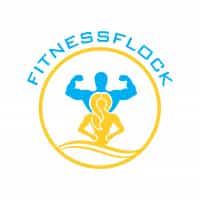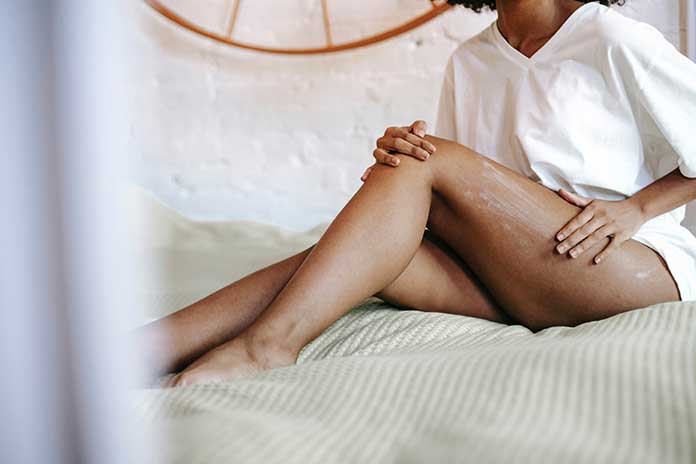Summer and heat call for swollen and heavy legs: let’s solve the problem with the proper natural remedies, a little movement, and a few small practical tricks. When summer arrives, the request that every herbalist receives most frequently is that of a natural remedy that eases the heaviness in the legs.
Unfortunately, the humid heat to which we are subjected, the lack of movement, the posture, and too much time standing or sitting slow down the lymphatic circulation, with a consequent heaviness of the legs due to the stagnation of liquids.
Even venous circulation influences the problem of heavy legs: venous ascent can be difficult in a sedentary lifestyle, scorching temperatures, or incorrect postures, and women, in particular, can be affected during the menstrual cycle. When you wake up, you often find yourself with swollen legs, arms, hands, and face: the body is weighed down with oedemas, which are drained after some time after getting up and exercising.
Heavy Legs Cause
We have seen how climatic conditions, posture, and a sedentary lifestyle can affect circulation and cause heaviness in the legs. However, the causes are only sometimes manageable. It is necessary to pay attention to these manifestations, which can be an alarm bell for more serious pathologies or their consequences:
- Disc herniation: the back, especially the lumbar and sacral portion of the spine, is closely neurologically connected to the legs, and forms of disc protrusion can cause various kinds of imbalances and cause heaviness in the legs, including muscles.
- Renal insufficiency: lymphatic circulation, fluid drainage, and blood circulation are likely to be strongly influenced by a physiological malfunction of the kidneys.
Swollen, hardened, and heavy legs are a clear sign which must be investigated by a specialized doctor supported by clinical tests.
Thrombophlebitis
severe pathology to continually be monitored carefully. The legs become a weak point to be treated with care and protected from possible trauma. Varicose veins are a pathology that manifests with venous outpourings, which are very evident and, in some cases, painful. In addition, they can bring tiredness, heaviness, and dermatitis. We can use natural remedies to lighten the legs, mobilize and drain the lymphatic stasis and promote venous ascent.
Also Read: Dry Hands: These Home Remedies & Tips Will Help!
Natural Remedies For Heavy Legs
Heavy, swollen, contracted legs can be helped with mechanical remedies, natural remedies for external use and supplements, and herbal teas to assist well-being from within.
Nature’s pharmacy provides many active ingredients that act as vasotonics, drainers, and refreshers. Through herbal teas and dry or fluid extracts, ointments can stimulate microcirculation, venous recall, lymphatic drainage, and diuresis.
Butcher’s broom boasts vasoprotective and anti-inflammatory properties thanks to saponins, resins, and essential oils. It acts as a phlebotomist by the ruscogenin component, which improves venous tone, making it more elastic.
It is also indicated in the case of capillary fragility and excessive permeability. It has a diuretic and anti-edema action. Butcher’s broom is an excellent natural remedy in case of swelling of the legs, lymphatic stagnation, phlebitis, venous insufficiency, nocturnal cramps, and hemorrhoids.
It can be taken in dry extract up to 750 mg daily or in the hydroalcoholic quote up to 80 drops away from meals. Butcher’s broom is a primary ingredient in relaxing leg joints, associated with other active ingredients.
Gotu Kola
Gotu kola speaks to the blood circulation, stimulates collagen synthesis for the venous walls, thus acting as a phlebotomist, and counteracts venous insufficiency and capillary fragility, thanks to the triterpenic fraction it contains. Facilitates the healing of ulcers and wounds in general.
It is indicated in the case of heavy legs, inflammation, and hemorrhoids. In addition, we find it in preparations for topical use in synergy with other natural remedies. It is recommended to check its intake with your doctor for internal use, as it could interact with some antidepressant drugs. However, it is not recommended in the case of diabetes and pregnancy.
Red Vine
The red vine has an anti-inflammatory action and is indicated in hemorrhoids, varicose veins, venous insufficiency, and cellulitis. It contains bioflavonoids with potent antioxidant and anti-inflammatory activity, but the main characteristic of red life is its vasotocin and vasoprotective function. In addition, it regulates capillary permeability and venous laxity.
Red vine is indicated in the case of varicose veins, phlebitis, edema, hemorrhoids, cellulite, couperose, water retention, and heaviness in the legs. This remedy can be taken in infusion, in hydroalcoholic extract, away from meals. The red vine is one of the ingredients for preparing refreshing and anti-fatigue gels for the legs to be applied in the morning and evening.
Horse Chestnut
If we talk about heavy legs, we cannot ignore the chestnut, whose seeds contain escin, a mixture of saponins with anti-inflammatory properties, which acts on vessels and capillaries to enhance their tone and resistance; it acts as a vasoconstrictor.
Horse chestnut is indicated in case of hemorrhoids, fissures, capillary fragility, heavy and swollen legs, lymphatic stasis, edema, hematomas, and varicose veins. In addition, horse chestnuts contain coumarins, which act as blood thinners, and could therefore interact with antiplatelet drugs. Consequently, medical advice is advised.
It can be taken from dry extract, hydroalcoholic extract, and bud extract, up to 800 mg daily, away from meals. Horse chestnut is generally contained in topical preparations, gels, or ointments, to be applied on the legs for microcirculation problems.
Birch sap: birch sap has analgesic, anti-inflammatory, detoxifying, and draining properties. It acts on the lymphatic system to purify the toxins accumulated in the body, useful in the case of cellulite to reduce fluid stagnation and painful accumulations.
Stimulates diuresis, useful in case of hyperuricemia and treating arthrosis. Relieves the problem of heavy legs due to edematous excesses and inflammation. However, its use is not recommended for those suffering from renal insufficiency and those undergoing pharmacological treatments based on antiplatelet agents. It can be taken in the form of a bud extract.
Orthosiphon
Or Java tea, orthosiphon is rich in saponins, flavonoids, essential oil, and potassium. It has diuretic, draining, and antibacterial properties. It is helpful in the case of heavy legs due to fluid stagnation, reduced diuresis, gout, rheumatism, urinary tract infections, kidney and biliary stones formation, cellulite, and overweight problems.
It is not recommended for those suffering from renal insufficiency. However, it can be taken in dry or fluid extract, preferably not in the evening.
Heavy Legs: Some Practical Advice
The movement helps to lighten the legs weighed down by oedematous stagnation, muscle contractions, or venous insufficiency. Walking briskly, or changing your posture, swinging several times a day on your toes, standing up on your toes, and then descending on your heels – to be precise – helps stimulate venous ascent and lymphatic mobilization. Another helpful tip is to sleep with your legs slightly raised, perhaps lying on a pillow, making sure that there is support under the knees.
This allows you to wake up in the morning with lightened legs. Let’s take advantage of the home shower for a “Kneipp” effect: hot and cold showers stimulate venous and lymphatic circulation from the bottom up. We always finish with cold water for a vasoconstriction effect. After the shower, apply a cold-effect gel or ointment with mint, butcher’s broom, red vine, and horse chestnut: there are many similar preparations on the market. We keep the bottle in the refrigerator!


